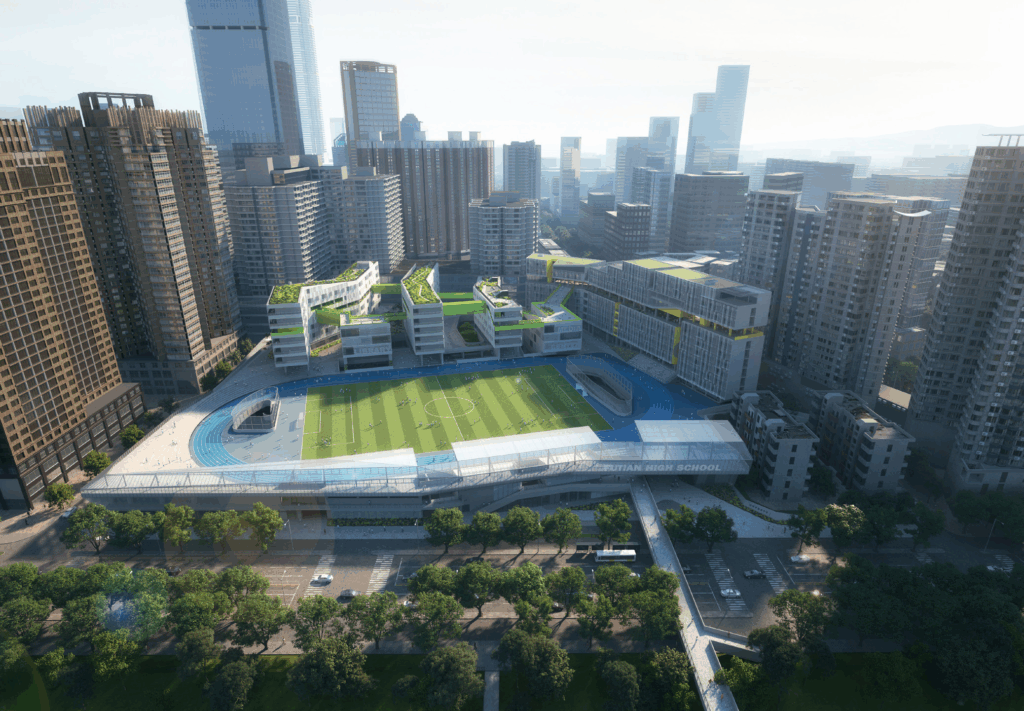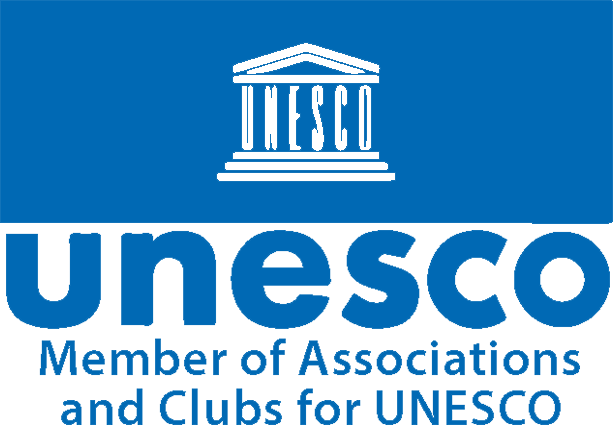
Chen Chen
is an architect and landscape urbanist. She graduated in Architecture from Tsinghua University, obtained a Master degree in Landscape Urbanism from the Architectural Association and completed a Master in Landscape Architecture at Harvard GSD, receiving the Jacob Weidenman Award, the highest design award of the year.
She has won several international prizes in architecture and landscape design, including the ASLA (American Society of Landscape Architects) Honour Award (2011 and 2013) and her work has been exhibited worldwide (Rotterdam Architecture Biennale, Montpellier Festival des Architectures Vives, Venice Biennale, etc.).
Before establishing reMIX studio, she has collaborated with design offices in China and the US and has taught design workshops worldwide (Tsinghua, UPenn).
Futian Campus Rendering and construction photos: Courtesy of reMIX
According to her perspective, the design of school campuses in China has been severely influenced in the past by examination-oriented education and focus on safety and efficiency. The campuses are often isolated from society, separated by walls, and lack connection to the surrounding community.
Based on her own personal approach and observations, architect Chen seeks to emphasize the social aspect and public component of the future education typologies in design, informed by her understanding of the limitations of standard existing school campuses.
reMIX’s projects aim for a critical integration of architecture and landscape into a synthetic urban hybrid. As a female architect and mother, architect Chen believes that school buildings have a significant impact on students’ lives and their understanding of the city, nature, and the environment.
“The territory has to be understood as a metabolic network, onto which the redefinition of the presupposed natural / artificial and local / global can depart; then the envisioning and construction of future social assemblages can finally take-off.”
Challenging the notion that school campuses should be isolated from the city and society, she suggests exploring options for increased interaction between schools and the community, questioning the current independent state of Chinese campuses. She considers the social contexts and creates connections with the larger urban environment.
Some examples found on her projects are: intelligent engaging paths, multifunctional corridors, and an integration of nature and outdoor learning into the school environment, allowing students to connect with plants, soil, and the surrounding environment.
At Futian Middle School, we recognize a high-density project that requires innovative spatial solutions to handle the increased flow of people. Here, “The Loop,” a traffic ring placed in the upper floors of the higher buildings, serves as a connection between different areas and slows down vertical traffic.

This solution not only improves transportation efficiency, but also transforms the corridor into a rich and interesting space, multifunctional setting and provides more options for students to choose their paths. She aims to offer bright colors and engaging sequences of spatial experiences along the way, where students can play, socialize, explore, and have a sense of belonging.
Overall, Chen’s personal approach and understanding of the project emphasizes the need for innovation, through creating social spaces and links to the environment. Her work aims to improve the conventional, while offering rich and joyful experiences to the users of the space. She particularly emphasizes the importance of breaking through design norms and involves a variety of design forces from society, including independent firms like hers.



Published in 2A Magazine# 50, Autumn 2023

